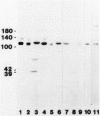Abstract
We recently reported that an injection of antibody raised against renal brush border glycoprotein, gp108, in rats induced passive Heymann nephritis with acute and severe proteinuria. In this study, the distribution of gp108 in various rat tissues was investigated. On enzyme immunoassay, anti-gp108 antibody reacted to extracts of small intestine, lung, spleen, thymus, liver, epididymis, stomach, pancreas and heart. It also reacted to sera and extracts of peripheral blood cells, especially lymphocytes. These antigens, which are cross-reactive to kidney gp108 have similar biochemical properties: a molecular weight of about 108,000 and an isoelectric point of 4.8-5.4. These results show that immunologically and biochemically related antigens to renal glycoprotein, gp108, are present in various rat tissues.
Full text
PDF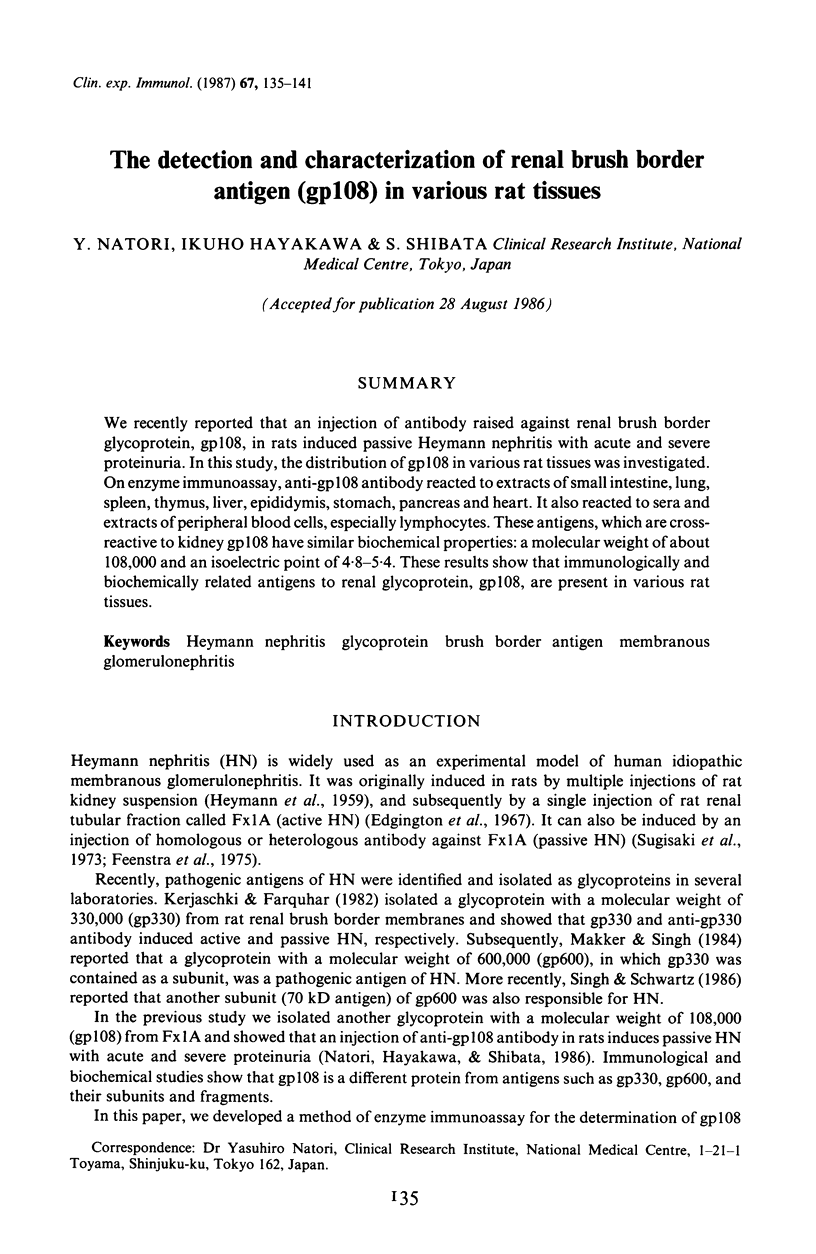
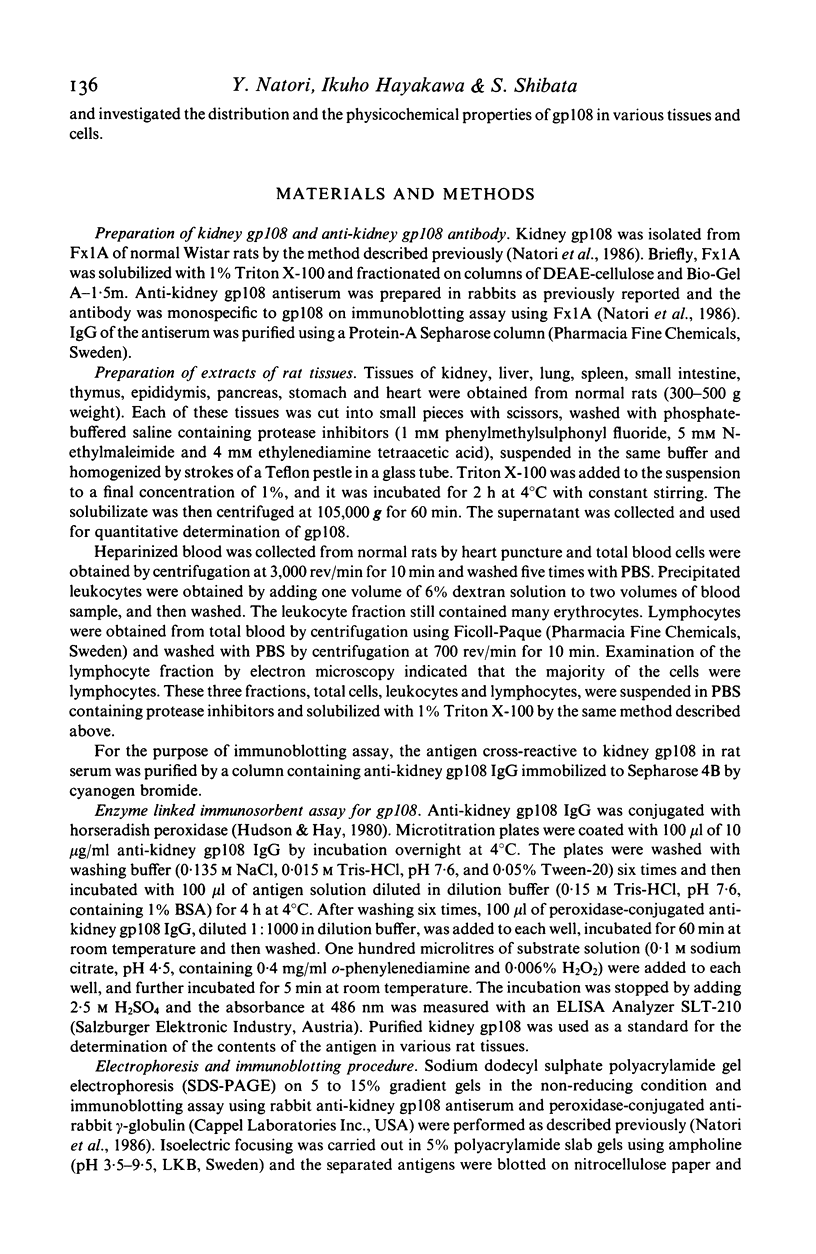
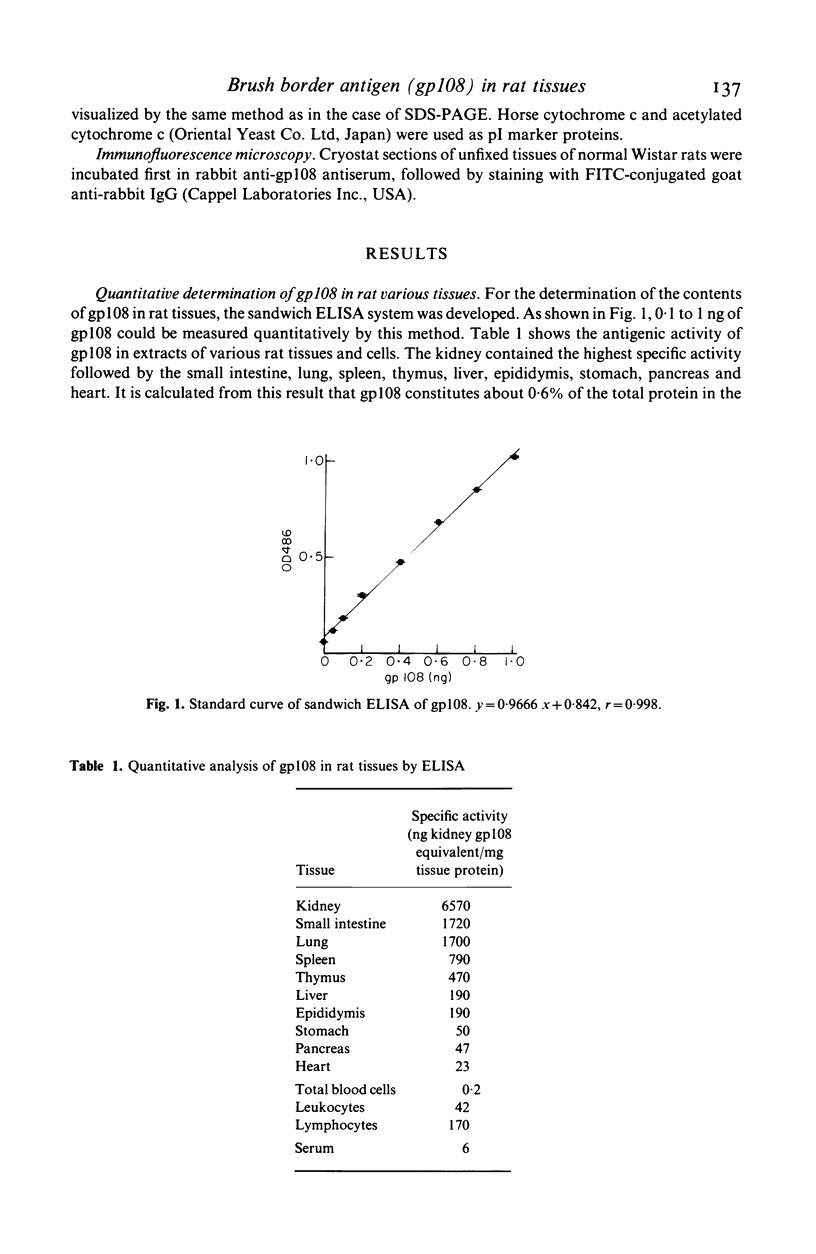
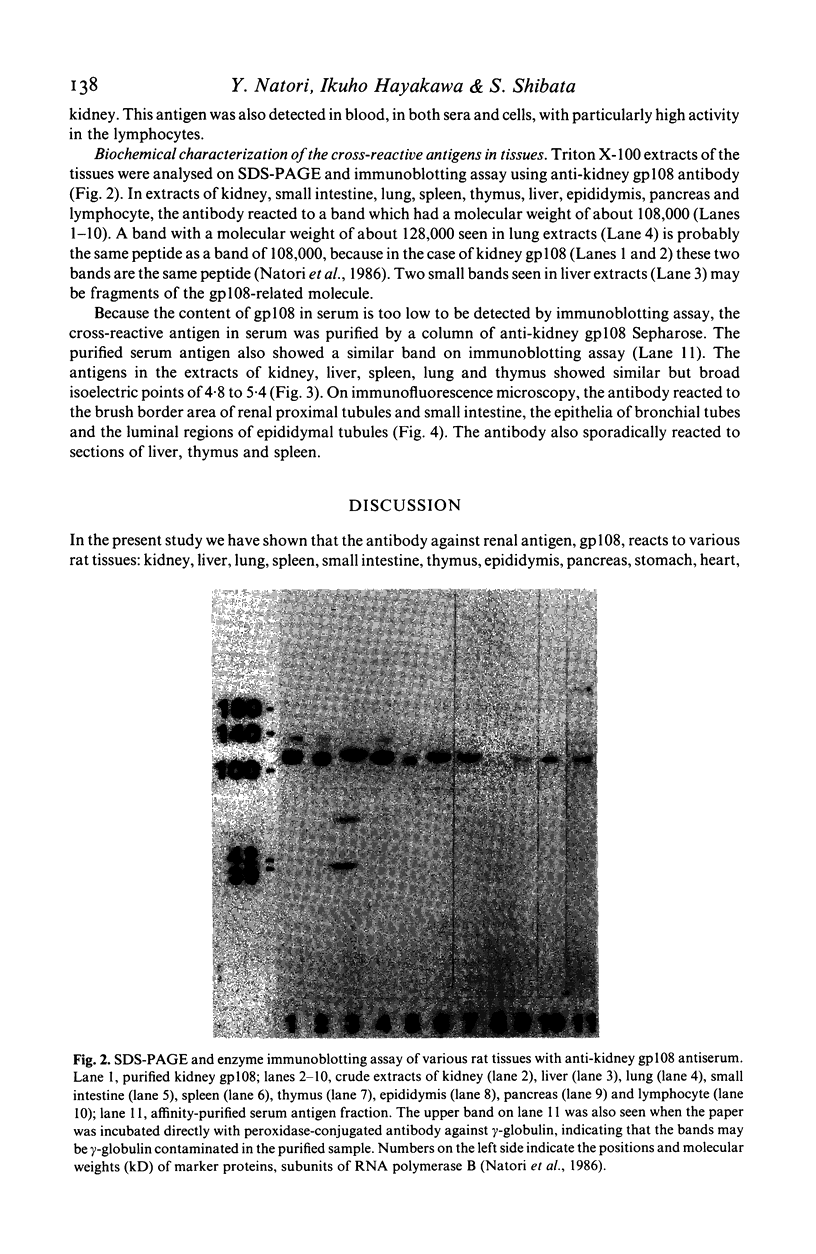
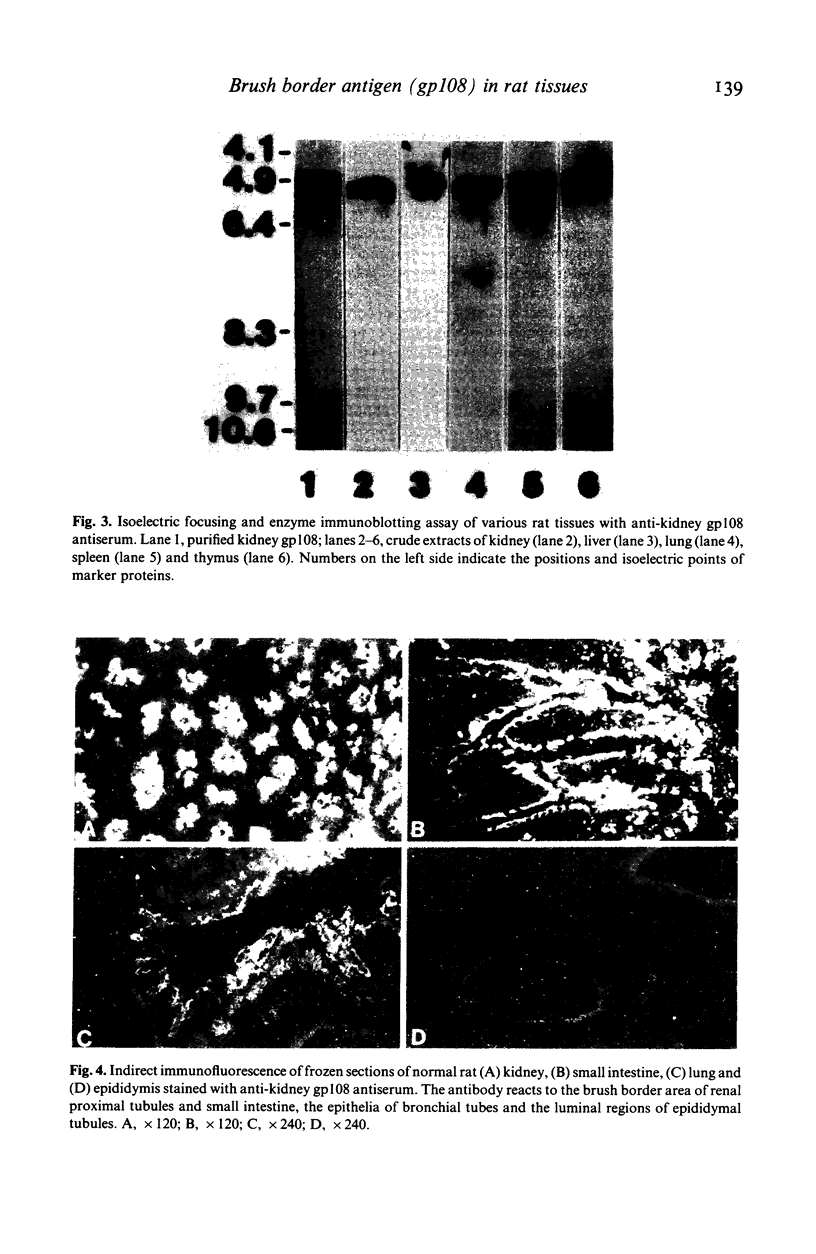
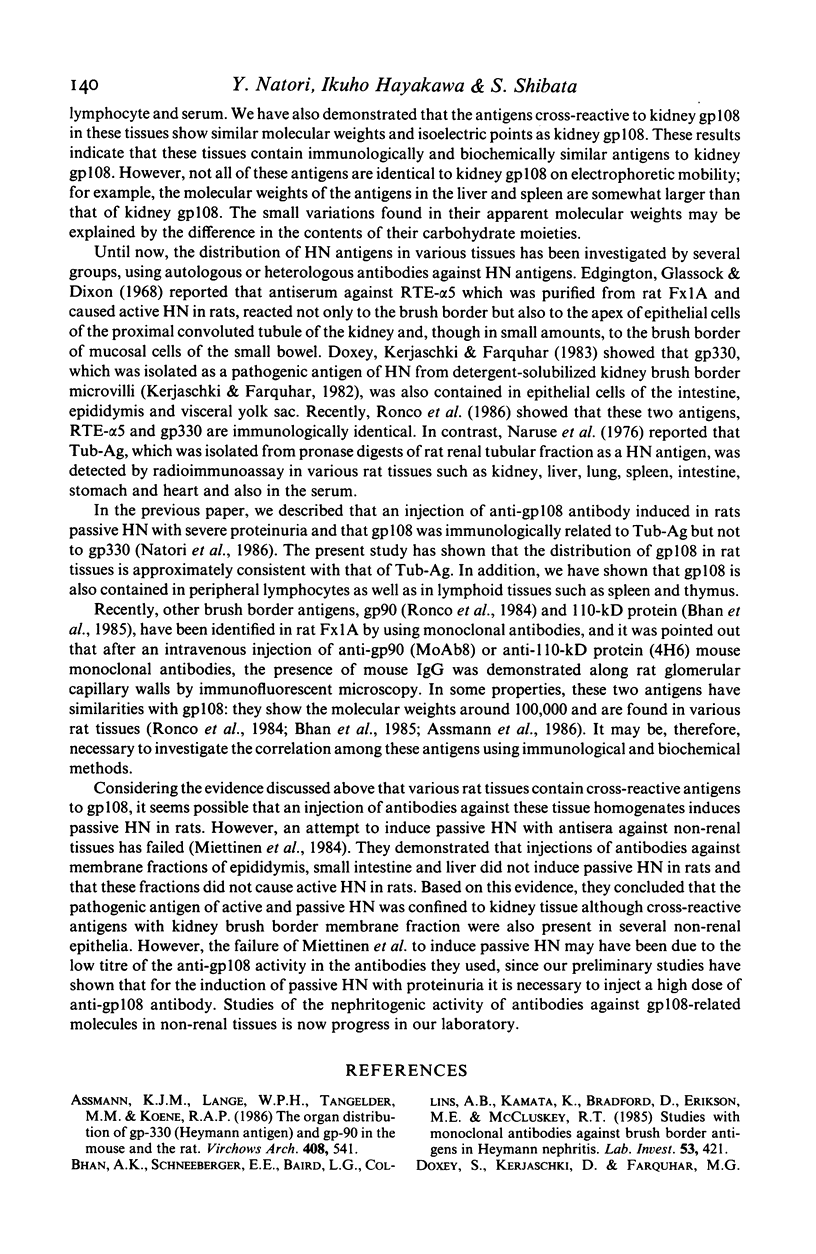
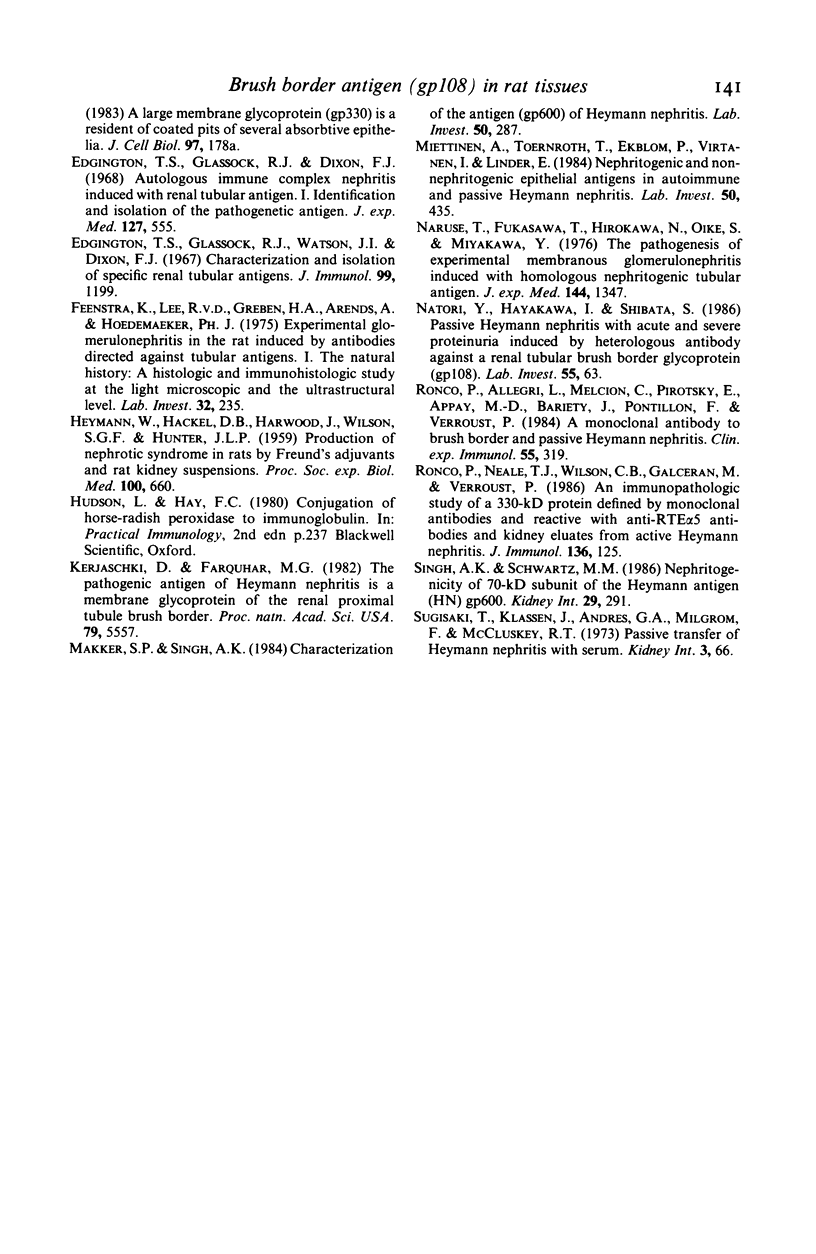
Images in this article
Selected References
These references are in PubMed. This may not be the complete list of references from this article.
- Assmann K. J., Lange W. P., Tangelder M. M., Koene R. A. The organ distribution of gp-330 (Heymann antigen) and gp-90 in the mouse and the rat. Virchows Arch A Pathol Anat Histopathol. 1986;408(5):541–553. doi: 10.1007/BF00705307. [DOI] [PubMed] [Google Scholar]
- Bhan A. K., Schneeberger E. E., Baird L. G., Collins A. B., Kamata K., Bradford D., Erikson M. E., McCluskey R. T. Studies with monoclonal antibodies against brush border antigens in Heymann nephritis. Lab Invest. 1985 Oct;53(4):421–432. [PubMed] [Google Scholar]
- Edgington T. S., Glassock R. J., Dixon F. J. Autologous immune complex nephritis induced with renal tubular antigen. I. Identification and isolation of the pathogenetic antigen. J Exp Med. 1968 Mar 1;127(3):555–572. doi: 10.1084/jem.127.3.555. [DOI] [PMC free article] [PubMed] [Google Scholar]
- Edgington T. S., Glassock R. J., Watson J. I., Dixon F. J. Characterization and isolation of specific renal tubular epithelial antigens. J Immunol. 1967 Dec;99(6):1199–1210. [PubMed] [Google Scholar]
- Feenstra K., van den Lee R., Greben H. A., Arends A., Hoedemaeker P. J. Experimental glomerulonephritis in the rat induced by antibodies directed against tubular antigens. I. The natural history: a histologic and immunohistologic study at the light microscopic and the ultrastructural level. Lab Invest. 1975 Feb;32(2):235–242. [PubMed] [Google Scholar]
- HEYMANN W., HACKEL D. B., HARWOOD S., WILSON S. G., HUNTER J. L. Production of nephrotic syndrome in rats by Freund's adjuvants and rat kidney suspensions. Proc Soc Exp Biol Med. 1959 Apr;100(4):660–664. doi: 10.3181/00379727-100-24736. [DOI] [PubMed] [Google Scholar]
- Kerjaschki D., Farquhar M. G. The pathogenic antigen of Heymann nephritis is a membrane glycoprotein of the renal proximal tubule brush border. Proc Natl Acad Sci U S A. 1982 Sep;79(18):5557–5561. doi: 10.1073/pnas.79.18.5557. [DOI] [PMC free article] [PubMed] [Google Scholar]
- Makker S. P., Singh A. K. Characterization of the antigen (gp600) of Heymann nephritis. Lab Invest. 1984 Mar;50(3):287–293. [PubMed] [Google Scholar]
- Miettinen A., Törnroth T., Ekblom P., Virtanen I., Linder E. Nephritogenic and non-nephritogenic epithelial antigens in autoimmune and passive Heymann nephritis. Lab Invest. 1984 Apr;50(4):435–446. [PubMed] [Google Scholar]
- Naruse T., Fukasawa T., Hirokawa N., Oike S., Miyakawa Y. The pathogenesis of experimental membranous glomerulonephritis induced with homologous nephritogenic tubular antigen. J Exp Med. 1976 Nov 2;144(5):1347–1362. doi: 10.1084/jem.144.5.1347. [DOI] [PMC free article] [PubMed] [Google Scholar]
- Natori Y., Hayakawa I., Shibata S. Passive Heymann nephritis with acute and severe proteinuria induced by heterologous antibody against renal tubular brush border glycoprotein gp108. Lab Invest. 1986 Jul;55(1):63–70. [PubMed] [Google Scholar]
- Ronco P., Allegri L., Melcion C., Pirotsky E., Appay M. D., Bariety J., Pontillon F., Verroust P. A monoclonal antibody to brush border and passive Heymann nephritis. Clin Exp Immunol. 1984 Feb;55(2):319–332. [PMC free article] [PubMed] [Google Scholar]
- Ronco P., Neale T. J., Wilson C. B., Galceran M., Verroust P. An immunopathologic study of a 330-kD protein defined by monoclonal antibodies and reactive with anti-RTE alpha 5 antibodies and kidney eluates from active Heymann nephritis. J Immunol. 1986 Jan;136(1):125–130. [PubMed] [Google Scholar]
- Sugisaki T., Klassen J., Andres G. A., Milgrom F., McCluskey R. T. Passive transfer of Heymann nephritis with serum. Kidney Int. 1973 Feb;3(2):66–73. doi: 10.1038/ki.1973.13. [DOI] [PubMed] [Google Scholar]



